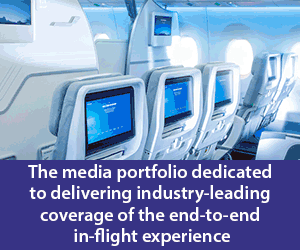Viasat has released its full year 2020 fourth quarter fiscal year figures, with in-flight services registering a 13% year-over-year increase, even with the impact of the COVID-19 pandemic late in the quarter.
The company ended 2019 with 1,390 commercial aircraft in service.
According to Chairman and CEO Mark Dankberg, IFC is expected to remain significantly impacted until air travel recovers. “We are working closely with our airline customers to manage the downturn while engaging in multiple growth opportunities. Several metrics, such as the Transportation Security Administration (TSA) daily traveller measurements below, indicate April 2020 likely was a floor for passenger traffic. We had been gaining market share steadily in North America, and our interactions with airlines suggest good opportunities to sustain, or improve, market share gains globally post crisis,” he stated.
Talking to analysts, Dankberg said the near-term issues of the airlines the company is working with is simply survive the pandemic and keep their workforce and their assets intact and their customers, their customer value propositions and communicate with customers. Long-term, airlines are wondering “what’s it going to be like on the other side and what’s the role of connectivity in that?”
“What we are seeing among the airlines that we’ve been working with, our existing customers, and new one,s is absolutely continued interest in in-flight connectivity, probably expanded interest in it,” Dankberg said.
On the question of the effects of fleet retirements, Dankberg said Viasat “tended to capture newer planes.”
“I think that we’ll see fewer retirements than some of the other in-flight providers will see. As an example, the MAX. There has not really been a lot of discussion about the MAX grounding, but the MAX is one of the new – the most fuel-efficient planes out there. That comes back. That’s good for us. 787s also, so I think we’re little bit disproportionately tilted towards the newer planes. So, I think, we’ll see probably a little fewer retirements.
He also pointed to the opportunity for Viasat to be involved in upgrading or installing in-flight connectivity for airlines on planes that are grounded and may not return to service that quickly, stating that that such projects would be at effectively a lower cost than it would be if the planes in question were in active service.
When asked if airlines would reduce their investment in IFC, as a cost-saving measures, Dankberg responded: “I think that one of the things that we’ve been saying, I think it’s catching on is that, for airlines, they’re not really going monetise in-flight connectivity unless everybody can use it, unless the engagement is high.
“There are definitely airlines that are looking at how they integrate that into their business model and can we help them with that. And I think that we can… we’ve seen this in past times is that, when money is really tight, people are generally more receptive to new business models and we generally have pretty creative business models.
“And so, I think that the idea that, we can work with the airlines to help them improve their business model through higher passenger engagement, high bandwidth activities. I think that’s getting more traction now, because of the limitations of the budgets and the fact that they got the opportunity to install, whether we can put that across the finish line with number of carriers, we’ll see over the next few months, but the opportunities are clearly there.”






